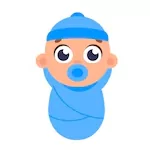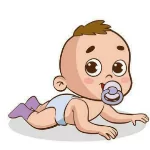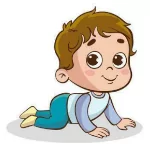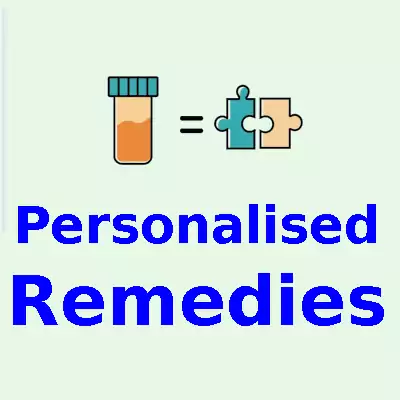Growth Calculator

After your baby’s birth, regular osteopath or pediatrician visits will track their growth using weight, height, and head circumference measurements plotted on a growth chart. While consistent growth indicates health, don’t worry if your baby isn’t exactly in the middle of the chart – there’s a wide range of normal. Percentiles compare your baby’s measurements to those of the same age and sex. For example, the 20th percentile means your baby weighs more than 20% of similar children. Consistent growth, regardless of the percentile, is key. This growth percentile calculator is an educational tool, not a replacement for regular checkups with your pediatrician, who will assess your child’s overall growth pattern.
Child Weight
To get a fairly accurate weight at home between doctor visits, undress your baby completely and weigh yourself holding them. Then weigh yourself alone and subtract the difference. While not as precise as the doctor’s scale, it’s a helpful estimate. Contact your pediatrician if you have concerns; they use specialized equipment for accurate measurements.
Child Height
To measure length (height for babies who can’t stand), lay your baby flat and stretch a measuring tape from head to heel. A second person might be needed to straighten their legs. Record the length in inches or centimetres. Slight variations from the doctor’s measurements are normal.
Child Circumference
Head circumference, measured regularly for the first two years, tracks brain development. To measure, wrap a flexible tape around the widest part of the head, above the eyebrows and ears. Repeat three times and use the largest measurement. While home measurements can be tricky, they provide a general idea of growth.
The above criteria work for children aged up to 2 years. For children aged 2-10, growth is still tracked using weight, height, and Body Mass Index (BMI), but head circumference is typically no longer measured routinely. Growth charts specific to this age range are used to plot these measurements and determine percentiles, similar to how it’s done for infants. Regular checkups with a pediatrician will monitor growth and development according to these metrics.

Growth Analysis
Growth analysis in children is an important aspect of their overall well-being. It’s not just about physical size, but a comprehensive evaluation of their development across various domains. This analysis tracks a child’s progress over time, using specific indicators as milestones to gauge their healthy development. These milestones encompass three key areas biological, emotional and psychological growth.
Growth analysis is a continuous process, and parents play a vital role in observing their child’s development. If any concerns arise, consulting a pediatrician is essential. They can assess the child’s progress, identify potential issues, and help to promote healthy growth and development. Homeopathy aims to support a child’s natural growth processes by addressing underlying imbalances that hinder their development.
Common Childhood Health Concerns
Adenoids
Adenoids, located at the back of the nasal passage, are a mass of lymphatic tissue that plays a crucial role in the immune system, helping to fight infections and maintain overall health. In children, adenoids can become enlarged due to recurrent infections or inflammation, leading to difficulties in nasal breathing, snoring, and chronic ear or sinus problems.
Tonsillitis
Tonsillitis, a common issue in children, has symptoms of inflammation and swelling of the tonsils, located at the back of the throat. These tonsils are part of the immune system and are often affected by viral or bacterial infections. Symptoms can include a sore throat, difficulty swallowing, and swollen, tender lymph nodes in the neck.
Recurrent Cough & Cold
Recurrent cough and cold in children refers to frequent respiratory tract infections, manifesting as persistent coughing, runny or stuffy nose, sneezing, and sore throat. These episodes are common in young children due to their developing immune systems, which are more susceptible to viruses and bacteria, particularly in group care settings or during seasonal changes.
Allergies
Allergies in children can cause discomfort and disrupt daily life, from sneezing and itching to more severe reactions. Homeopathy helps by addressing the root cause of allergies, helping to alleviate symptoms and strengthing the immune system. By tailoring remedies to your child’s unique needs, homeopathy aims to reduce sensitivity to allergens and improve overall well-being, providing a gentler alternative for managing allergic responses.

Asthma
Asthma in children is a chronic respiratory condition characterized by inflammation and narrowing of the airways, leading to episodes of wheezing, coughing, and shortness of breath. It’s often triggered by factors such as allergens, infections, exercise, or cold air, and can vary in severity from occasional mild episodes to frequent, life-threatening exacerbations.
Intestinal Worms
Intestinal worms in children are parasitic infections that occur when children ingest contaminated soil, food, or water. These infections can cause several health issues from gastrointestinal symptoms, including abdominal pain, diarrhea, weight loss, and general fatigue to malnutrition if left untreated.
Earache
Earache in children is a common and often painful condition that can be caused by several factors, including ear infections, allergies, and even teething. Symptoms can include pain, pulling at the ear, fussiness, and difficulty sleeping. While most earaches resolve on their own, it’s important to consult a doctor if the pain is severe or persistent, as it could indicate a more serious underlying condition.
Teething Issues
Teething is a common stage of development where a baby’s first teeth erupt through their gums. This process can cause discomfort, leading to symptoms like drooling, fussiness, chewing on objects, and a slight fever. While teething is a natural part of development, it can be challenging for both the baby and their loved ones.
Gastric and Stomach Health Issues
Gastric and stomach health issues in children are common and can range from mild discomfort to more serious conditions. Symptoms can include nausea, vomiting, diarrhea, constipation, abdominal pain, and loss of appetite. These issues can be caused by a variety of factors, including food allergies, infections, stress, and even changes in diet.
Homeopathy for children with special needs
Homeopathy has useful remedies for a range of challenges affecting many special children. These challenges do not mean a lack of intelligence or desire to succeed. Instead, they involve differences in how information is processed and received, rather than a limitation in cognitive capacity. These special children can be brilliant, but their brains function differently.
However, these differences can hinder their learning, comprehension, and application of knowledge in daily activities. Observing any changes in behaviour and emotions is important, as these can indicate underlying health issues that require professional consultation.
Homeopathy works on the mental plane covering the history of mother and child. It supports and complements conventional treatment by addressing the individual child’s needs and supporting their overall well-being. It helps in managing symptoms like anxiety, sleep disturbances, or behavioural challenges associated with any health issues, promoting a sense of calmness and balance.

Autism
Autism spectrum disorder (ASD) is a neurodevelopmental disorder that affects a child’s nervous system, impacting their growth and development. Symptoms often become apparent during a child’s first three years of life. Children with autism typically experience challenges in the areas of Social Interaction, Social Communication and Cognitive Flexibility.

ADHD
Attention Deficit Hyperactivity Disorder (ADHD) is a neurodevelopmental disorder typically diagnosed in childhood. Individuals with ADHD often exhibit a combination of inattentiveness, hyperactivity, and impulsivity. These symptoms can significantly impact their lives, leading to challenges in areas such as academic performance, social interactions, and self-esteem.
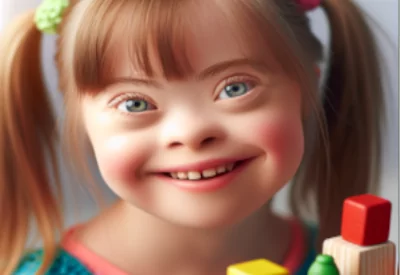
Down Syndrome
Down syndrome is the most common chromosomal condition associated with intellectual or physical disability. It is caused by a chromosomal abnormality, resulting in 47 chromosomes instead of the usual 46. This extra chromosome disrupts the normal development of the body and brain.

Dyslexia
Dyslexia is a learning disorder that affects reading fluency, accuracy, and spelling. It’s often described as an unexpected difficulty in learning to read, despite normal intelligence. Individuals with dyslexia may struggle with phonological awareness, verbal memory, and rapid naming tasks.

Dyspraxia
Dyspraxia directly affects the motor skills in a person. Motor skills control the movement and coordination in our body. This condition in kids leads to bumping into things or having trouble holding a spoon or tying the shoelaces. Other problems associated with dyspraxia include speech difficulties, difficulty with eye movements, etc.
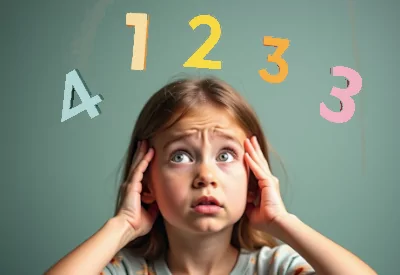
Dyscalculia
Dyscalculia is a learning disorder that affects a person’s ability to understand and work with numbers. It can manifest in various ways, from difficulty learning to count as a child to struggling with basic math problems as they get old. The specific challenges associated with dyscalculia vary from person to person.
Homeo Care Approach

Homeo Care believes in detailed case taking of child. We believe in Child behavior study(CBS), which is a vast and multifaceted field dedicated to understanding, analyzing, and addressing the diverse range of behaviors exhibited by children. It delves into the complex world of childhood development, encompassing both typical and challenging behaviors. This field seeks to unravel the intricate interplay of factors that shape a child’s actions, thoughts, and emotions, ultimately aiming to promote healthy development and well-being.
Law of Individualisation
The Law of Individualization is a fundamental principle in homeopathy that sets it apart from other systems of medicine. It emphasizes the unique nature of each individual and their response to illness. To truly works from its root, we must understand how the condition started, what triggered it, and the precursor events that led to its development. This requires a deep understanding of the individual, their history, and their unique reactions to different circumstances. As rightly said, the basis of an individual’s response is its genetic code, and to decode this, we must individualize our approach.
One generation of antibiotics often fails to help individuals, leading to the development of new generations of drugs. It’s only a matter of time before individual drug sensitivity is routinely checked and prescribed. In the future, even allopathic medicine will likely move towards a more individualized approach.
This individualized approach allows us to identify the most effective treatment for each child, taking into account their unique needs and sensitivities. By recognizing and addressing the individual’s unique experience of illness, homeopathy aims to provide a more personalized and effective treatment experience.
Book Your Appointment Today
Frequently Asked
Questions
Get the Answers
Yes! Homeopathic remedies are gentle and non-toxic. They’re ideal for colic, teething, and sleep issues.
Remedies like Aconite and Belladonna boost immunity and reduce the frequency of infections.
Remedies like Sulphur and Graphites address skin allergies, while Natrum Mur helps with respiratory allergies.
Yes! Remedies like Tuberculinum and Stramonium calm hyperactivity and improve focus without sedation.
Remedies like Equisetum and Kreosotum address physical and emotional causes of bedwetting.
No. Homeopathy does not replace vaccinations but can support immunity. Discuss vaccination decisions with your pediatrician.
Remedies are selected based on the child’s physical symptoms, temperament, and medical history. Dosages are adjusted for safety.
Yes! Homeopathy reduces asthma attacks and dependency on inhalers by addressing triggers like allergies and stress.

